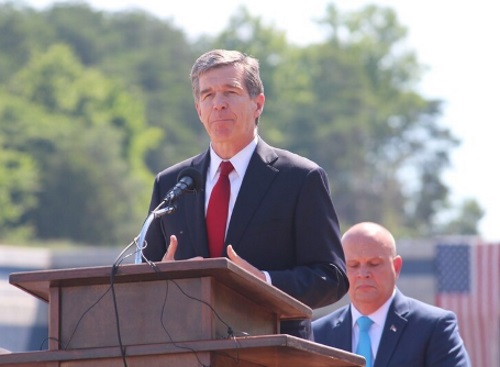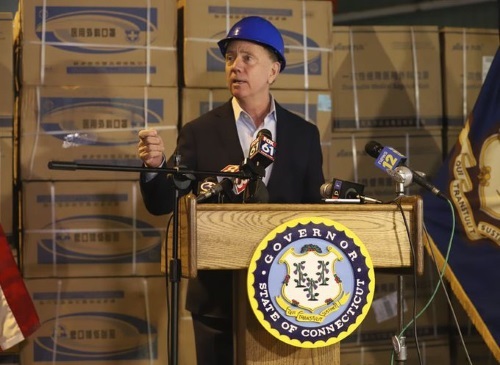The governors of North Carolina and Connecticut recently issued executive orders that mandate the formation of “clean transportation” plans to reduce greenhouse gas or GHG emissions in their respective states.
[Above photo by the NCDOT]
Governor Roy Cooper (D) issued an executive order on January 7 that includes a directive to the North Carolina Department of Transportation to develop a North Carolina Clean Transportation Plan for decarbonizing the transportation sector through reductions in vehicle miles traveled, an increase in zero-emission cars, trucks, and buses, along with other GHG-reduction strategies.
“Transforming North Carolina toward a clean energy and more equitable economy will provide good jobs and a healthy environment for generations of families across our state,” Gov. Cooper said in a statement. “This order will assess our progress reducing climate pollution, and direct ways to curb environmental injustices, increase clean transportation options, and build more resilient communities in North Carolina.”

The governor’s order updates North Carolina’s economy-wide carbon reduction emissions goals to “align with climate science, reduce pollution, create good jobs and protect communities,” while increasing the statewide GHG reduction goal to 50 percent when compared to the state’s 2005 levels.
The order calls for the increase in registered zero-emission vehicles to a total of 1.25 million by 2030, with 50 percent of sales of new vehicles in North Carolina to be zero-emission by that same year.
“This executive order ensures our state is preparing for and supporting emerging technologies,” added J. Eric Boyette, NCDOT’s secretary. “We are committed to working with our state and local partners to develop a clean transportation plan – one that will benefit all North Carolinians.”
Gov. Cooper’s order mirrors a similar one issued by Connecticut Governor Ned Lamont (D) in December 2021.
Gov. Lamont’s order directs Connecticut executive branch state agencies to take “significant actions” within their authority to reduce carbon emissions.
“Climate change is here, and it’s only going to get worse if we don’t take meaningful action,” he said in a statement. “In September [2021], a bad progress report showed that we’re in danger of missing our statutory greenhouse gas reduction goals, so we need to roll up our sleeves and do the necessary work to improve. That work starts with us in the executive branch, and that’s why I’m directing our state agencies to take these actions.”
That “progress report” – officially known as Connecticut’s Greenhouse Gas Inventory Report – shows that GHG emissions from the state’s transportation and building sectors are increasing, meaning that Connecticut is not on track to meet its interim 2030 target.

Gov. Lamont said the state must take “aggressive action” where possible within existing authority to reduce carbon emissions, and that is why he is directing a whole-of-government approach with his executive order and calling on the Connecticut General Assembly to authorize expanded investment and de-carbonization programs.
Transportation measures within the governor’s order include the creation of a statewide battery-powered electric bus fleet; the funding of “shovel-ready” infrastructure resilience projects; plus regulating emissions from medium and heavy-duty vehicles.
It also directs the Connecticut Department of Transportation to cease buying directly or provide state funding to third parties for the purchase of diesel buses by the end of 2023 and create an implementation plan for full bus fleet electrification by 2035. It also directs the Connecticut DOT to set a statewide 2030 Vehicle Miles Traveled or VMT reduction target.
“Transportation is the largest source of greenhouse gas emissions in Connecticut, and the Connecticut Department of Transportation can be the biggest driver to reduce air pollutants,” noted Joseph Giulietti, commissioner of the Connecticut DOT.
“Connecticut families and communities, especially the ones most vulnerable and historically underserved, deserve clean transportation,” he added. “The [Connecticut] DOT will do our part, while listening to and working with our partners in health, and equity and environmental justice, to ensure our efforts have a positive impact on all people.”

